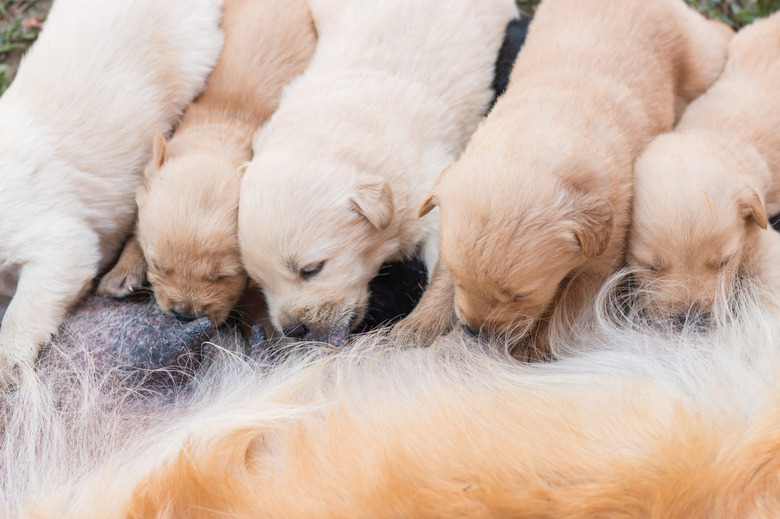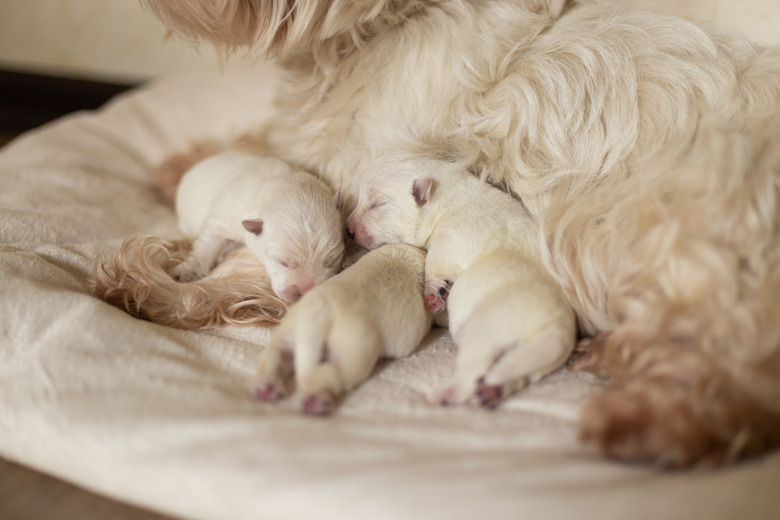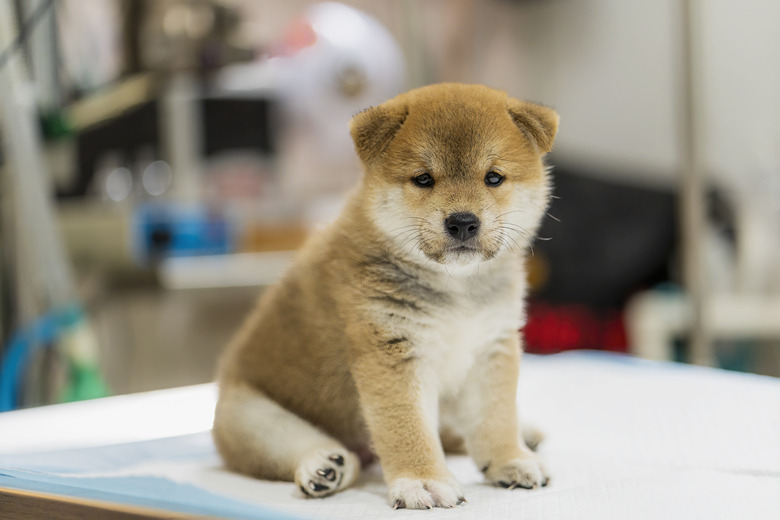How To Tell If Newborn Puppies Are Getting Milk
Newborn puppy nutrition is crucial whether you're a breeder, an adopter, or a casual dog lover who has just inherited a litter. The first milk that puppies get from their mother is called colostrum. Mother's milk, rich in nutrients, contains antibodies that puppies need to protect them from diseases until their immune system has developed. Newborn puppies should nurse within the first 12 to 24 hours to be sure that they get colostrum and that they are able to absorb it.
How to tell if newborn puppies are getting milk
How to tell if newborn puppies are getting milk
You can usually tell if your newborn puppies are feeding by carefully observing them over their first few days. You may want to palpate the teats of the mother to make sure that her milk production is adequate. You'll also need to ensure that each of the young puppies is getting enough time with the mother dog's lactating nipples.
It's important to monitor for these things in the first weeks of life because in some cases, a mother dog will have a litter that is too large for the amount of milk that she is able to produce. In some cases, you may need to supplement the mother dog's milk supply, especially if the mother is a first-time mother; if the mother dog has an illness, such as mastitis; or if the nursing dog is nervous and struggling to let the puppies nurse.
When should a mother dog be feeding puppies?
When should a mother dog be feeding puppies?
Puppies in any given litter should have at least five minutes of contact time with a healthy, milk-producing nipple every two to three hours for the first few weeks of age. Newborn puppies who are getting enough milk from their nursing mother will generally be quiet and will appear content. Hungry feeding puppies will cry and may try to search for nourishment from adult dogs or other resources.
A standard measure to ascertain whether or not new puppies are getting enough milk is to weigh them at least once a day. Write down the body weight for each puppy. By the age of 1 week, each pup's weight should be at least double what it was at birth.
Visual cues that a puppy is not eating enough
Visual cues that a puppy is not eating enough
Examine each puppy closely. A newborn puppy who is getting enough milk tends to look rounded and filled out through the belly. If a puppy is not getting enough to eat, their stomach area will look flat and may even look a bit pinched. A puppy who looks like they have an empty stomach may not be getting enough to eat. This goes for any breed of dog, from Chihuahuas to Great Danes.
Orphan puppies need warmth and sustenance. Keep their body temperature stable with a heating pad, heat lamp, or hot water bottle. Give bottle-fed puppies warm puppy milk replacer in a pet nursing bottle and allow them to drink as much as they want at each feeding. Feed them every few hours for their first 2 weeks.
After bottle feeding, rub each puppy's lower abdomen with a warm, damp cloth or gauze pad to help them empty their bowels and bladder. Newborn pups cannot do this for themselves, and without their mother, you'll be responsible for helping them gain weight appropriately until weaning them so they can eat puppy food or any solid food at all.
If you must remove pups from a healthy mother, even part time, provide a source of warmth. You can express the mother's teats for milk or even for colostrum if the dam is healthy and then bottle or tube feed it to the puppies with a nursing bottle, a syringe, or a dropper.
The bottom line
The bottom line
If you have a mother dog with puppies, you need to monitor them to ensure that everyone is getting what they need. You need to make sure that the mother dog is comfortable and that the puppies are being fed adequately. Examine each puppy closely, including their behavior and weight, and provide supplemental warmth and sustenance if needed.


